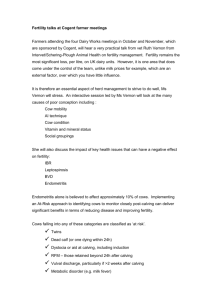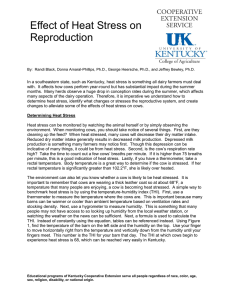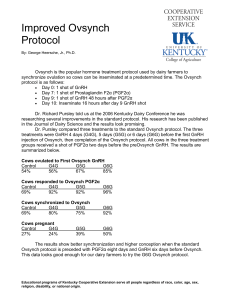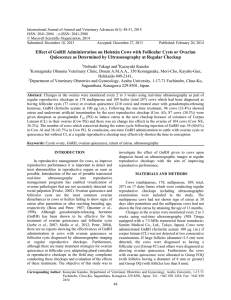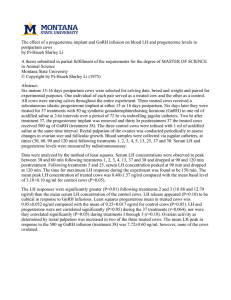La Nina and Reproduction
advertisement
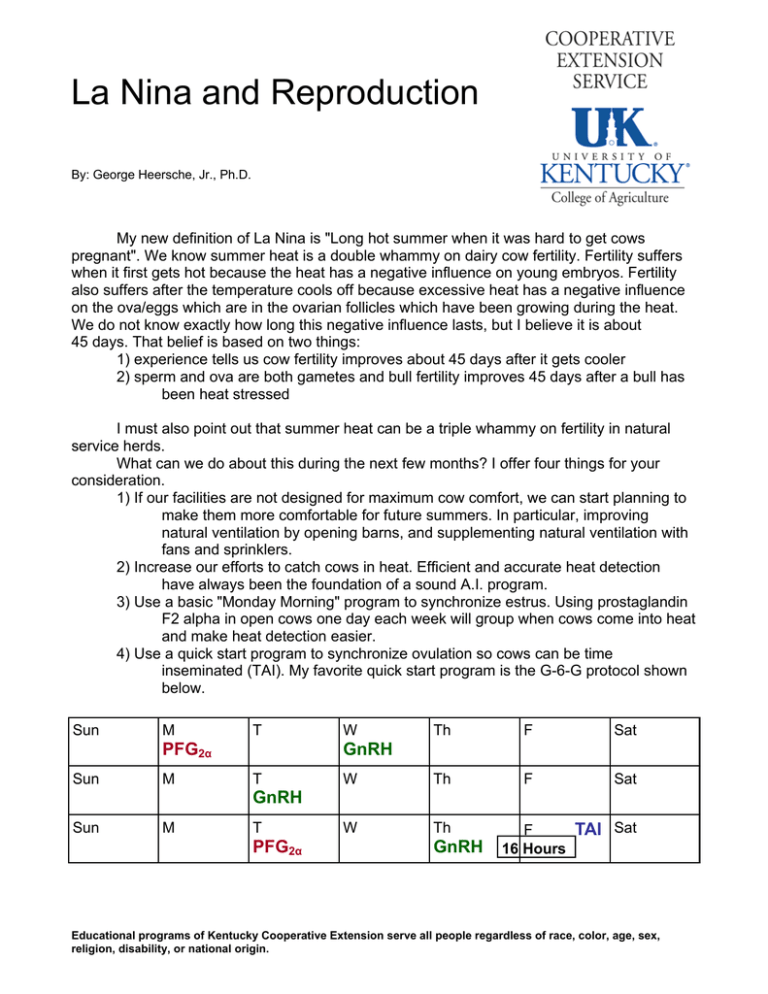
La Nina and Reproduction By: George Heersche, Jr., Ph.D. My new definition of La Nina is "Long hot summer when it was hard to get cows pregnant". We know summer heat is a double whammy on dairy cow fertility. Fertility suffers when it first gets hot because the heat has a negative influence on young embryos. Fertility also suffers after the temperature cools off because excessive heat has a negative influence on the ova/eggs which are in the ovarian follicles which have been growing during the heat. We do not know exactly how long this negative influence lasts, but I believe it is about 45 days. That belief is based on two things: 1) experience tells us cow fertility improves about 45 days after it gets cooler 2) sperm and ova are both gametes and bull fertility improves 45 days after a bull has been heat stressed I must also point out that summer heat can be a triple whammy on fertility in natural service herds. What can we do about this during the next few months? I offer four things for your consideration. 1) If our facilities are not designed for maximum cow comfort, we can start planning to make them more comfortable for future summers. In particular, improving natural ventilation by opening barns, and supplementing natural ventilation with fans and sprinklers. 2) Increase our efforts to catch cows in heat. Efficient and accurate heat detection have always been the foundation of a sound A.I. program. 3) Use a basic "Monday Morning" program to synchronize estrus. Using prostaglandin F2 alpha in open cows one day each week will group when cows come into heat and make heat detection easier. 4) Use a quick start program to synchronize ovulation so cows can be time inseminated (TAI). My favorite quick start program is the G-6-G protocol shown below. Sun M T PFG2α Sun M W Th F Sat W Th F Sat W Th GnRH T GnRH Sun M T PFG2α GnRH F TAI Sat 16 Hours Educational programs of Kentucky Cooperative Extension serve all people regardless of race, color, age, sex, religion, disability, or national origin.
